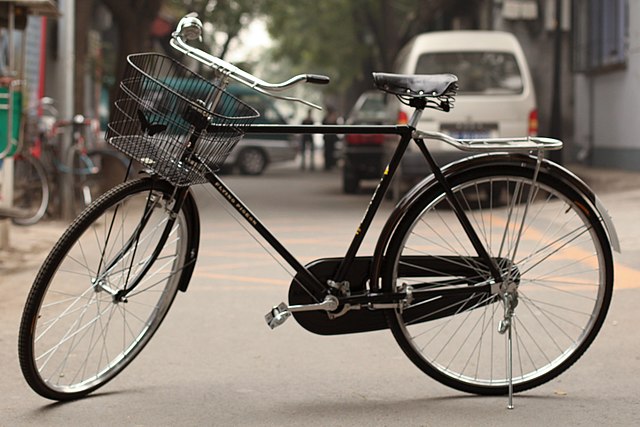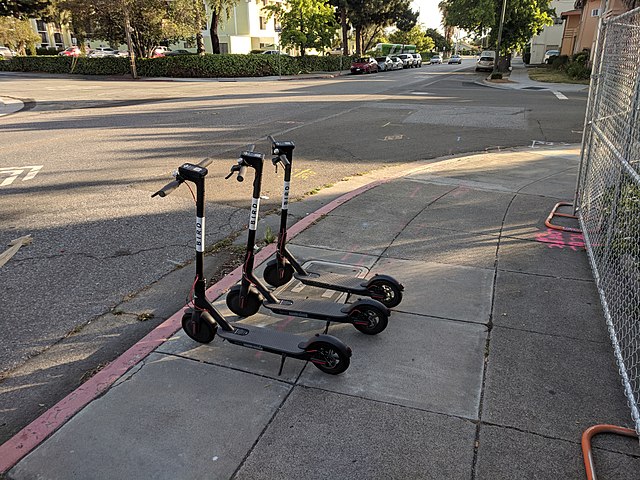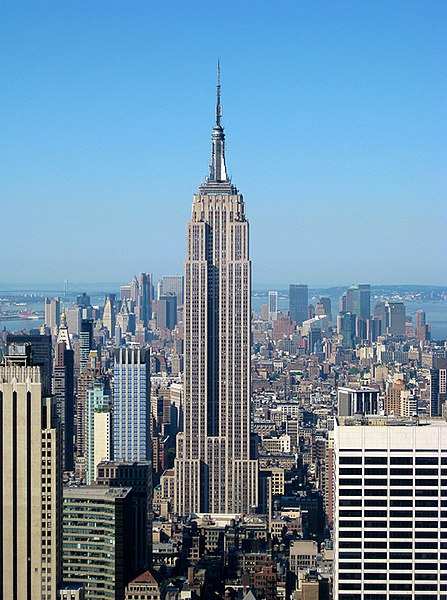Energy efficiency in transport
The energy efficiency in transport is the useful travelled distance, of passengers, goods or any type of load; divided by the total energy put into the transport propulsion means. The energy input might be rendered in several different types depending on the type of propulsion, and normally such energy is presented in liquid fuels, electrical energy or food energy. The energy efficiency is also occasionally known as energy intensity. The inverse of the energy efficiency in transport is the energy consumption in transport.
Nordic walkers
A Chinese Flying Pigeon bicycle
Electric kick scooters, part of a scooter-sharing system, in San Jose, California.
The Tesla Model 3, an electric vehicle with an efficiency of 131 mpge (26 kWh/100 miles).
Efficient energy use, or energy efficiency, is the process of reducing the amount of energy required to provide products and services. There are many technologies and methods available that are more energy efficient than conventional systems. For example, insulating a building allows it to use less heating and cooling energy while still maintaining a comfortable temperature. Another method is to remove energy subsidies that promote high energy consumption and inefficient energy use. Improved energy efficiency in buildings, industrial processes and transportation could reduce the world's energy needs in 2050 by one third.
Receiving a Gold rating for energy and environmental design in September 2011, the Empire State Building is the tallest and largest LEED certified building in the United States and Western Hemisphere, though it will likely be overtaken by New York's own One World Trade Center.[needs update]





